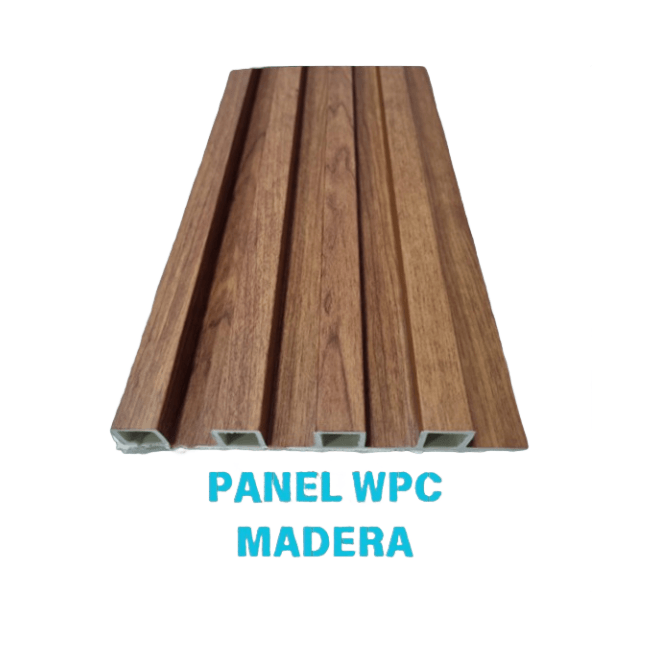Eco-Friendly WPC Wall Panels: A Sustainable Solution for Modern Living
2025-05-12
In the quest for environmentally conscious building materials, Wood Plastic Composite (WPC) wall panels have emerged as a popular choice for homeowners, architects, and designers alike. These innovative panels combine the aesthetic appeal of natural wood with the durability and sustainability of plastic, creating a product that is both practical and eco-friendly. In this article, we will explore the features, benefits, and applications of eco-friendly WPC wall panels, highlighting why they are becoming a staple in contemporary construction.

What are Eco-Friendly WPC Wall Panels?
Wood Plastic Composite (WPC) wall panels are made by blending wood fibers (such as sawdust or wood shavings) with recycled plastic. This unique combination results in a durable, versatile material that mimics the appearance of wood but with superior resilience and longevity. The use of recycled plastics not only reduces waste but also contributes to the sustainability of the material, making it an eco-friendly choice for a variety of applications.
Benefits of Eco-Friendly WPC Wall Panels
1. Sustainability: The most significant advantage of WPC wall panels is their eco-friendly nature. These panels are made from a mixture of natural wood fibers and recycled plastic, helping to reduce deforestation and plastic waste. By using recycled materials, WPC panels contribute to the circular economy and reduce the carbon footprint of the construction industry.
2. Durability and Low Maintenance: WPC wall panels are incredibly durable and resistant to the elements. Unlike traditional wood, WPC does not warp, splinter, or crack over time. It is also resistant to moisture, mold, and pests, making it ideal for both interior and exterior applications. With minimal maintenance required, WPC wall panels maintain their beauty and function for years, reducing the need for frequent repairs or replacements.
3. Aesthetic Appeal: Eco-friendly WPC wall panels offer the aesthetic qualities of natural wood, such as texture and color, while also providing a contemporary and sleek appearance. Available in a wide range of styles, finishes, and colors, these panels can complement various architectural designs, from modern to traditional. Whether used for accent walls, cladding, or interior decor, WPC panels add elegance and sophistication to any space.
4. Weather Resistance: One of the standout features of WPC wall panels is their resistance to weather conditions. Unlike wood, which can deteriorate under the influence of sunlight, rain, or extreme temperatures, WPC panels retain their structural integrity and appearance. This makes them an excellent choice for outdoor installations, such as garden walls, facades, and fences.
5. Energy Efficiency: WPC panels can contribute to energy efficiency in buildings. By acting as an insulating barrier, they help to regulate the temperature inside a building, keeping it cooler in the summer and warmer in the winter. This can reduce the need for excessive heating or cooling, lowering energy consumption and promoting a more sustainable living environment.
6. Ease of Installation: WPC wall panels are designed for easy installation, with many products featuring interlocking systems that allow for quick and hassle-free mounting. This reduces labor costs and installation time, making them a practical option for both new constructions and renovation projects.
Applications of Eco-Friendly WPC Wall Panels
1. Residential Interiors: WPC wall panels are widely used in residential homes to create beautiful feature walls, decorative panels, and room dividers. The variety of textures and finishes available allows homeowners to create personalized spaces with a natural look and feel.
2. Exteriors and Facades: Due to their weather resistance, WPC panels are a popular choice for exterior applications. They are commonly used as cladding materials for building facades, providing an attractive and durable finish. WPC panels can withstand harsh weather conditions, making them ideal for use in both urban and rural settings.
3. Commercial Spaces: In commercial construction, eco-friendly WPC wall panels are utilized for office interiors, retail spaces, and hospitality settings. They help create a welcoming and stylish environment while also promoting sustainability, which is increasingly important to businesses and consumers alike.
4. Outdoor Areas: WPC wall panels are also a great option for outdoor living spaces, such as garden walls, patios, and balconies. Their resistance to moisture, mold, and UV rays ensures that they maintain their appearance and functionality, even when exposed to the elements.
5. Public Buildings: From schools to hospitals, WPC wall panels are being used in public buildings to enhance both aesthetics and functionality. These panels provide an eco-friendly alternative to traditional materials, contributing to the overall sustainability goals of public infrastructure projects.
Environmental Impact and Sustainability
The use of WPC wall panels directly contributes to a more sustainable future. By incorporating recycled materials such as plastic waste, these panels help divert large amounts of plastic from landfills, giving it a second life as a valuable construction material. Additionally, the use of wood fibers in WPC panels encourages the recycling of wood byproducts, further minimizing waste and promoting responsible resource management.
Furthermore, WPC wall panels are fully recyclable at the end of their lifespan, ensuring that they do not contribute to long-term environmental pollution. When disposed of properly, they can be broken down and reused in future products, creating a closed-loop system that reduces the need for raw materials.
How WPC Wall Panels Contribute to Green Building Certifications
Incorporating eco-friendly WPC wall panels into construction projects can help buildings earn certifications such as LEED (Leadership in Energy and Environmental Design) and BREEAM (Building Research Establishment Environmental Assessment Method). These certifications recognize buildings that meet high standards of environmental sustainability, energy efficiency, and resource conservation.
By choosing WPC panels, builders and designers can contribute to the green building movement and help reduce the overall environmental impact of construction. Additionally, many WPC panel manufacturers are committed to sustainable practices, ensuring that the production of these materials adheres to eco-friendly principles.
Conclusion
Eco-friendly WPC wall panels are a sustainable, durable, and versatile choice for modern construction and interior design. Their combination of natural wood aesthetics and recycled plastic benefits makes them an ideal solution for those looking to reduce their environmental footprint while still achieving a high-quality, stylish finish. Whether for residential, commercial, or public spaces, WPC wall panels offer a range of advantages, including weather resistance, low maintenance, and energy efficiency, all while contributing to a more sustainable and eco-conscious world. As the demand for green building materials grows, WPC wall panels are poised to become a key player in shaping the future of construction.


